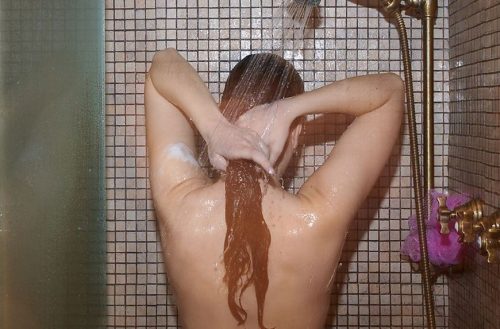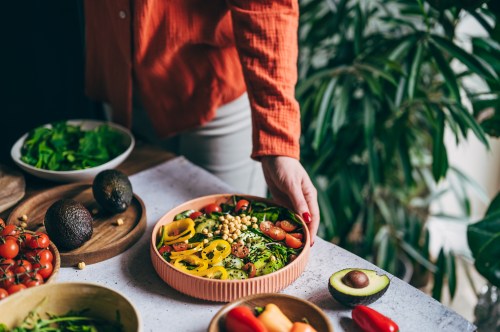Our editors independently select these products. Making a purchase through our links may earn Well+Good a commission
7 easy ways to use less water without totally changing your lifestyle
Here are tips for cutting down on how much water you use every day—without significantly changing your lifestyle.

Despite living in Los Angeles and learning to adapt to California’s chronic draught conditions, it wasn’t until I traveled to Cape Town, South Africa—which is on the verge of becoming the first major metropolis on the planet to run out of water—that I became fully aware of how much H2O the average person wastes during their daily life. Or, how a few super-easy behavior shifts can cut your consumption significantly.
The average American uses between 80–100 gallons of water per day, with the majority being used to flush the toilet. (Talk about pouring a precious resource down the drain.)
The average American uses between 80–100 gallons of water per day, with the majority being used to flush the toilet. (Talk about pouring a precious resource down the drain.) But because of the water scarcity during the dry season, when I arrived in Cape Town, I was asked—just like everyone else living in the city—to use 13 gallons per day. To my surprise, limiting myself to nearly 1/10 the amount of water I was used to was way easier than I thought it would be—so much so, that I’ve continued using a lot of the tips I picked up now that I’m back home in LA.
And on a positive note: The measures have proven to be so effective in Cape Town that the date of a potential water shut down has now been pushed from April to mid-July, by which time the rainy season likely will have begun. (Insert fingers crossed emoji, here.)
Keep scrolling to see the super-simple ways to reduce water usuage that I learned in Cape Town.

1. Extend days between washes
How often you wash your hair varies form person to person—and from state to state. But from an environmental POV, skipping a few post-workout shampoos is good for the planet. Who wants to stand in that gym shower line anyways? Dry shampoo is a good trick for a little volume when your hair starts falling flat or getting oily.
2. Start taking stop-start showers
Residents of Cape Town were asked to take 2-minute showers, a period of time that goes by faster than Tori Bowie if you’re being leisurely about things. A fix: Turn off the water while you’re lathering your body, shaving your legs, or soaping up and conditioning your hair. You’ll use closer to 2.5 gallons as opposed to 17 for an 8-minute shower.

3. Keep hand sanitizer, er, handy
Good old soap and water is still the gold standard when it comes to cleaning your hands and preventing the spread of bacteria and viruses. But if it’s not available, hand sanitzer is your next best option—especially when your hands aren’t dirty and you’re just looking to disinfect after a subway commute or gym class. And when you are spending time at the sink, turn the faucet off while you’re sudsing up.
4. Invest in a mist faucet
There are faucet attachments that reduce the flow so significantly that you just get a mist, which is still enough to clean your hands, btw. The better news? They use just two percent of the H2O washing under a rush of water does.
5. Let your pee be
You’d be surprised how quickly you get over thinking this is gross—obviously no one is advocating not flushing the, er, not yellow stuff! But the average toilet flush uses three gallons of water—so if you’re meeting your daily H2O goals, and peeing every 2–3 hours, you’d be sending 18–24 gallons down the drain every day.

6. Re-think your wash and rinse cycle
When washing dishes, start by filling a bowl with hot water and adding soap. Use that to wash all your dirty plates, pots, and pans first. Then, rinse them all at once at the end so there’s not water running the entire time. Simple.
7. Get creative with “ice”
Rather than use ice cubes in your smoothies, try freezing fruit instead. You’ll get the same chill factor without the extra water usage. Frozen avocado cubes, FTW!
If you’re in to conservation and beauty, check out the biodynamic trend. And, here’s the 411 on natural wine, which is made with the earth in mind.
Sign Up for Our Daily Newsletter
Get all the latest in wellness, trends, food, fitness, beauty, and more delivered right to your inbox.
Got it, you've been added to our email list.










